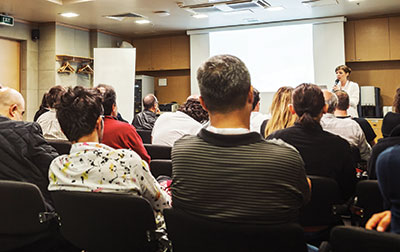
The biggest difference between qualified and nonqualified patronage distributions is timing of cash flows and tax deductions.
Cooperatives distribute member-based income to patrons in the form of patronage dividends. Historically, these took the form of qualified patronage dividends with a portion paid in cash and the rest paid in qualified equity credits. Subchapter T of the Internal Revenue Code has specific requirements for a distribution to be considered “qualified.”
Once these requirements are met, the cooperative is allowed a tax deduction for the entire patronage distribution, and the patron typically includes the full distribution in taxable income.
Another distribution method may provide cooperatives an attractive alternative.
Nonqualified patronage distributions
Non-qualified patronage distributions do not meet the Internal Revenue Code requirements to be considered a qualified patronage distribution, typically because less than 20 percent of the total distribution is paid in cash. Instead, the full amount is allocated in equity credits to the patron. The cooperative does not include the patronage distribution as a tax deduction, and the patron does not include this amount in taxable income in the year of distribution.
When the nonqualified equity is paid out in the future, the cooperative takes a tax deduction and the patrons include the amount paid in their taxable incomes.
The biggest difference between qualified and nonqualified patronage distributions is timing of cash flows and tax deductions. However, both maintain a single layer of taxation at the patron’s tax rate.
Potential advantages of nonqualified distributions
Depending on the percentage of the distribution that was paid in cash and the patron’s tax rate, patrons may see qualified distributions as a negative.
For example, consider the following situation:
A patron is allocated a total qualified patronage dividend of $1,000. Subchapter T requires that a minimum of 20 percent is paid in cash. Assume the minimum is paid in cash ($200) and the remaining ($800) is paid in equity certificates. Despite the patron only receiving $200 in cash, the patron must pay tax on the full $1,000 dividend.
If the patron pays tax at the highest individual rate of 37 percent, the patron would owe tax of $370, but only receive cash of $200 in the year of distribution.
Patrons are more likely to perceive nonqualified distributions positively because the cash received when nonqualified equity is paid out matches the amount taxed.
Evaluate tax rates for the cooperative and the patron especially in light of tax reform
Depending on the situation, paying tax at the cooperative level may be more beneficial for the patron than paying top individual ordinary tax rates of 37 percent, self-employment tax rates of 15.3 percent, and a potential surtax of 3.8 percent on net investment income. Paying the typical corporate tax rate of 21 percent can be accomplished by issuing non-qualified distributions.
Other tax benefits to consider include accelerated depreciation methods and section 199 Domestic Production Activities Deduction (DPAD). In order for the cooperative to fully take advantage of these deductions and lower corporate tax rates, taxable income may need to be created at the cooperative level, which again can be accomplished through the issuance of nonqualified distributions.
The redemption of the nonqualified distributions then allows for another potential tax planning tool in future years, should the need arise, since accelerated depreciation and Section 199A are set to expire. The issuance and redemption of nonqualified equities may also allow the cooperative to flatten taxable income from one tax year to the next.
Potential problems with nonqualified distributions
The largest potential issue with nonqualified distributions is in the year of transition. The cooperative’s cash flow may be reduced because issuing nonqualified patronage provides no tax benefit, while at the same time, prior years’ qualified equity may continue to be redeemed again with no tax benefit.
However, this can be remedied by utilizing DPAD and accelerated depreciation methods to offset the cooperative’s income tax or if the cooperative’s board limits the amount of prior years’ qualified patronage that may be redeemed in cash in the year of transition.
In a period of lower commodity prices and increased input costs, nonqualified distributions may not be as attractive to members as qualified distributions because the qualified distributions provide income to offset the increased costs and increased taxable income.
Educate board and patrons
Educating patrons is essential if cooperative leadership makes a change to nonqualified patronage distributions. The good news is often nonqualified distributions are easy to explain because the timing of cash receipts matches the timing of inclusion in taxable income for the patron. However, it is essential that the patron’s tax preparers and accountants understand the difference between qualified and nonqualified patronage distributions.
Nonqualified distributions are one more tool for cooperatives that may benefit both the cooperative and the patrons. However, each cooperative has unique circumstances, and so do its patrons. Very often the conversation about nonqualified distributions begins with a discussion with professional advisors during the development or revision of an equity management plan. Many times qualified and nonqualified distributions are used together to properly manage equity, cash flow, and income taxes.
How we can help
It is important that the cooperative board and management understand these aspects of the IRS Code. CLA's cooperatives team can help them fully utilize all the tools available to maximize benefits for the patrons and cooperative.
